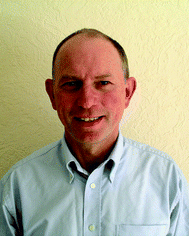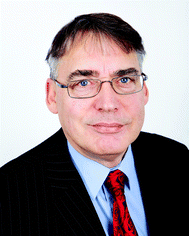Barry Sharp
I first met Barry when he joined the analytical chemistry research group at Imperial College, London, in 1968. Most of us had completed our undergraduate study at IC, as we called it, but Barry had come from outside. In fact he had studied Chemistry and Physics at another London institution but as long as it wasn't the enemy, University College, we didn't mind. Barry soon fitted into the group well but he didn't have quite the social network at IC as those of us who had been there for three years already, so we marked him down as rather serious. He was certainly fresh faced with golden hair and boyish good looks, we wondered if he was an under-age genius.Barry Sharp
Barry proved to be a highly successful researcher, his expertise in physics being of additional use as he pioneered the use of lasers in analytical chemistry. Up till then we had thought that the only use for lasers was in making James Bond movies. When Roy Dagnall left IC to go to the States, Barry was an obvious choice to take over and began a three year period as a Lecturer in Analytical Chemistry. These were exciting but turbulent times for the Chemistry Department at IC. While Nobel Prizes were awarded to others in the Department, analytical chemistry became increasing isolated and Professor Tom West FRS, the leader of the group, left to take up the post of Director of the Macaulay Land Use Research Institute in faraway Aberdeen. Barry joined him and eventually rose to be Head of the Analytical Chemistry Division there. He continued his work with lasers and also with inductively coupled plasmas. In a recent Heritage Lecture at the 2014 Winter Conference on Plasma Spectroscopy in Amelia Island, Florida, Barry reviewed the seminal work on sample introduction he completed at this time. The practical outcome was the versatile and practically unblockable conespray nebulizer. This demonstrated Barry's flair for combining rigorous theoretical studies, detailed surveys of the literature, not only in analytical spectroscopy but also, in this case, in areas such as fundamental aeronautics, with innovative design.
Loughborough University realised his still unfulfilled potential as an academic and recruited him from Scotland where he rose to be Professor of Analytical Chemistry. His important contribution to the use of inductively coupled plasma-mass spectrometry, especially for biological analysis and most especially as applied to cancer therapies, have regularly been reported in JAAS and other learned journals.
An enthusiastic conference contributor, Barry has also been at the centre of organising conferences including the CSI in York and the Winter Plasma Conference in Cambridge. In fact Barry has rarely missed a Winter Plasma Conference. It was at one of these conferences that Barry's boyish good looks were to embarrass him. It is difficult to believe now but he continued to look young well into his forties as did another popular spectroscopy conference goer, the late Dave Hickman. One evening they were thrown out of a bar in the States for being underage. A tale that they repeated with relish the next day, both being rather proud of it.
Professor Sharp has made great contributions to JAAS, he was an excellent Chair of the Editorial Board, succeeding me as the third chair, but we must not forget his key contribution to the birth of JAAS. What are now the prestigious Atomic Spectroscopy Updates were formerly published in a book called the Annual Reports on Analytical Atomic Spectroscopy or ARAAS. By the early 1980s the annual report format was beginning to appear outdated, there were delays in publication associated with the book format and the economic model was unhelpful. One wintry day in Sheffield in 1984, the Editorial Board of ARAAS had gathered for their annual meeting. Those coming from London were delayed and we discussed the future of ARAAS waiting for them to arrive. Barry arrived with the late Professor John Ottaway. They were very excited as on the train from London St Pancreas to Sheffield, John had convinced Barry that we should transform ARAAS into a journal. We could publish more up to date reviews but also primary papers in fundamental applied atomic spectrometry for which there was then no obvious specialist outlet. Together on that delayed journey they had mapped out what was to become JAAS. So it is most fitting that it should be JAAS that celebrates Barry's many contributions to science.
Les Ebdon,
University of Bedfordshire
Les Ebdon
| This journal is © The Royal Society of Chemistry 2015 |


